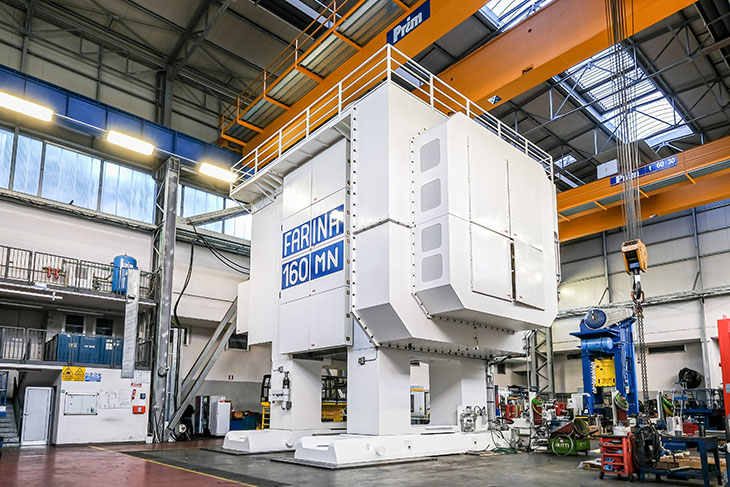
By Kevin Duggan, Founder, Institute for Operational Excellence
In many manufacturing operations, improvements are traditionally driven by management setting a goal in one area, charging employees with making changes to achieve it, then setting another goal. This approach typically leads to gradual improvements over time – improved quality, reduced inventory and so on – that often plateau.
Instead, to implement sustainable changes that will transform organizations end to end, what’s needed is a fundamental change in the way the performance of an operation is designed – function by function and process by process. And an approach adopted by the most progressive companies to accomplish this is Operational Excellence.
Preparing for OpEx
Before getting started on the path to Operational Excellence, the first step is for an organization to ask itself nine tough questions:
- Why do you do continuous improvement? The answer should be “to grow the business,” and not making the business a little better every day.
- What is the best way to improve? Rather than tools, the best way is to educate all employees on the destination of OpEx and provide a roadmap to reach it.
- How do you know where to improve? While many operations tackle fixes in areas where performance is lacking or there are resources available, instead, organizations should look at the roadmap.
- Why do you strive to create end-to-end flow? The answer isn’t to eliminate waste; it’s to see when flow stops.
- What cases the death of flow? Simply put, the answer is that the organization doesn’t truly understand why it created flow in the first place.
- What would your shop floor look like if you did everything right? Standing on the floor, anyone would be able to tell if the flow of product to the customer was normal and see standard work at and between each station.
- What would your office look like if you did everything right? When an office is set up correctly, everyone will know what to work on net based on flow, and not on management expedites or shifting priorities.
- What would your supply chain look like if you did everything right? The real answer is that an operation could tell if its supplier is on time just by walking through the warehouse and seeing if there’s enough inventory for the next scheduling period.
- Where will your continuous improvement journey take you? Instead of focusing on results, the more practical response is that the journey will take an operation to Operational Excellence.
Operational Excellence Defined
When an operation sets Operational Excellence as the destination for its improvement efforts, all employees can understand where the organization is going and their role in the process. That’s because Operational Excellence is defined as when “Each and every employee can see the flow of value to the customer, and fix that flow before it breaks down.”℠ When OpEx is achieved, the flow will tell employees what to work on next, where they’ll get their work from, how long it will take for them to complete it, and where and when they will send their work when finished.
A Roadmap to the Destination
Once the destination of Operational Excellence is set, the next step is to put a design in place to reach it. And there’s an eight-step process that the operation follows to design autonomous value stream flow throughout all areas of the business.
- Design Lean Value Streams.The objective of this first principles is to design – on paper – an end-to-end lean value stream flow, starting from the time it receives an order or request from the customer until the time it is delivered. After determining product families, an operation utilizes eight basic guidelines: takt time, finished goods strategy, continuous flow, FIFO, pull, single point scheduling, interval, and pitch. What results is a future state that has a connected flow from the customer to each process.
- Make lean value streams flow. Next, an operation takes the design from paper to performance. The first stage is to provide formal training so employees understand where the operation is going with the new design and how they’ll be able to see and fix flow. This training should be followed up by actual application on the shop floor when employees use standard lean tools to achieve the designed future state. After that, value stream flow can begin in the implemented areas.
- Make flow visual. Once the framework for flow is physically created, the next step is to make flow visual so that every employee can see how the processes are connected to one another and to the customer. In Operational Excellence, just about any visual indicator in the operation – whether static or dynamic – should have something to do with the flow or the progression of the flow of product to the customer.
- Create standard work for flow. After designing a good visual lean flow that lets employees see how the flow should normally work, the next step is to establish standard work at and between the processes. Applying standard work both at the processes and between them stabilizes the complete end-to-end flow to reduce variation and create normalcy for the entire flow.
- Make abnormal flow visual. In Operational Excellence, the goal is for every employee to see when or before abnormal flow happens to both correct it and prevent it from happening in the future – without management. A good way to reveal abnormal flow is through strong visual physical indicators that allow anyone to observe whether flow is on time to customer demand.
- Create standard work for abnormal flow. Even though employees have been taught how to adjust the flow to maintain it, eventually, flow will break down. The key is to have a course of action that an operator would take before calling a supervisor to get the flow back on track. To do that, an operation creates standard work for abnormal flow by recording the types of abnormal flow that have occurred and management’s responses to them in order to create a menu of actions those in the flow can take automatically, without seeking approval.
- Have employees in the flow improve the flow. Once the design is implemented that enables employees in the flow to continuously build a product and deliver it to the customer, the operation should seek to maintain and improve its performance using some proven continuous improvement tools to prevent abnormal flow from occurring.
- Perform Offense Activities. Operational Excellence is about business growth. By designing self-healing, autonomous flow, management can take time away from running the operation and put it into growing the business. By changing their role, operations management can now be involved in sales, engineering, and innovation – up front – to become part of the process that will evolve an operation from being a parts supplier to a solution provider.
A Competitive Edge
Achieving the destination of Operational Excellence can yield real results in as little as months, not years. Not only can managers work on offensive activities, but employees at every level of the organization will have the opportunity to as well. Supervisors can work on design changes with engineering, purchasing can spend time sourcing materials for new products, administrative staff can research contacts for the sales team, and even those in support groups like finance can leverage the flow to streamlines their activities so they can have more time to work on activities that grow the business, increase shareholder value, and improve market share – the true goal of Operational Excellence.























